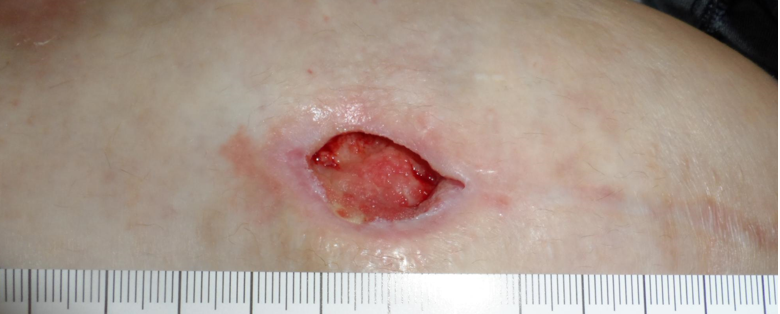What you put IN the patient may be as important as what you put ON them
I have been focusing more on nutrition with my patients. It’s so easy to overlook nutritional issues. Recently I saw a fairly young woman who suffered from juvenile Rheumatoid Arthritis and required a knee replacement. Naturally she was on prednisone and her knee incision dehisced. She was already on Negative Pressure Wound Therapy (NPWT) when she was referred to me, and the tissue in the wound was pale white and there was no granulation. The VAC sponge would just fall out of the wound. I was looking at her pale skin and it occurred to me that she might be Vitamin D deficient. I had some help remembering that because Matthew Regulski, DPM had written this excellent article in Today’s Wound Clinic about Vitamin D and wound healing. Sure enough, her Vitamin D-OH level showed she was seriously deficient in Vitamin D.
http://www.todayswoundclinic.com/articles/addressing-vitamin-d-deficiency-wound-care-clinic

After only 4 weeks of relatively high dose Vitamin D, this is the difference in her wound in response to NPWT:

The USWR now has 2 nutritional screening measures which can be reported under MIPS, one that is provider reported, and one that is patient reported. Read more about the measures here: https://uswoundregistry.com/qualitymeasures
To learn more about the role of nutrition and wound healing, join me for a breakfast symposium on Saturday September 9, at the upcoming APWCA meeting in Philadelphia. Evelyn Phillips, Clinical Nutrition Manager and Researcher at Magee Rehabilitation Jefferson Health System in Philadelphia will be giving a talk entitled, “Nutrition Intervention in Wound Management: The Neglected Piece of the 3-Legged Stool.” Afterwards, I will be explain how practitioners can avoid losing 4% of their Medicare Part B payments by performing a Clinical Practice Improvement Activity (IA) focused on nutritional screening of patients with wounds, and prescribing appropriate supplements.
http://www.apwca.org/2017-Overview

Dr. Fife is a world renowned wound care physician dedicated to improving patient outcomes through quality driven care. Please visit my blog at CarolineFifeMD.com and my Youtube channel at https://www.youtube.com/c/carolinefifemd/videos
The opinions, comments, and content expressed or implied in my statements are solely my own and do not necessarily reflect the position or views of Intellicure or any of the boards on which I serve.



